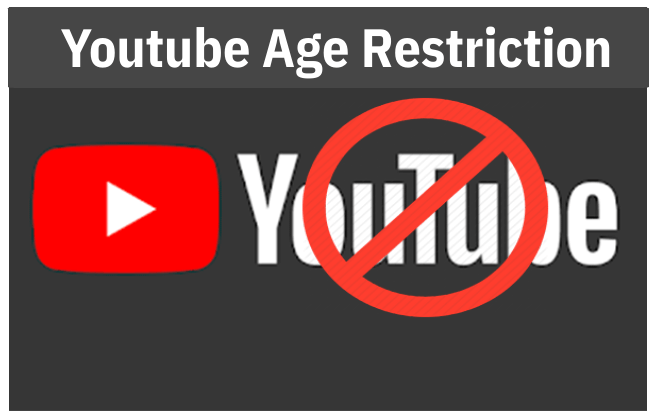Age verification on YouTube is a system designed to make certain that viewers meet the required age standards before accessing certain content. It aims to guard minors against doubtlessly harmful or inappropriate material by limiting their exposure. By enforcing age verification, YouTube objectives to create a safer and more age-appropriate viewing environment for its users.
-
Table of Contents
The Value of Age Restriction
Age restrictions for certain content are integral in safeguarding younger audiences from damaging and inappropriate material. Such restrictions prevent exposure to violence, specific language, and explicit or adult themes, promoting their emotional well-being and development. Protecting younger audiences on systems like YouTube is necessary for fostering protected and appropriate online surroundings for their growth.
-
Age-restricted Content Categories on YouTube.
YouTube has several age-restricted content categories, which include violence and graphic content, explicit language, drug and substance abuse, sexual content, and mature themes. These restrictions aim to protect younger viewers from potentially harmful or inappropriate material and ensure they access content appropriate for their age and maturity level.
-
Why is certain content age-restricted?
Content is age-restricted on YouTube to shield minors from exposure to violence, explicit language, sexual content, and different mature themes. These restrictions ensure the well-being and safety of younger audiences, advertising a more age-appropriate and accountable online environment.
Bypass Methods for YouTube Age Verification
-
Account Creation:
Some customers create a couple of accounts on platforms like YouTube to bypass age restrictions and access age-restricted content. This practice approves them to dodge the supposed safeguards and exposes them to potentially inappropriate material. Such behaviour undermines the reason for age verification and can compromise the safety of young audiences.
-
False Information:
During age verification on YouTube, users may grant inaccurate details deliberately or inadvertently. They may falsify their age to access age-restricted content material or ignore restrictions. Inaccurate facts undermine the system’s effectiveness and pose challenges in ensuring the appropriate content access is primarily based on users’ authentic age.
-
Third-party Tools:
Some customers resort to third-party browser extensions or plugins to skip age verification on YouTube. These tools permit them to manipulate their browser settings or use proxies to conceal their proper age. However, using such strategies undermines the intended cause of age verification and can lead to inappropriate content exposure.
-
VPNs and proxies:
Virtual private networks (VPNs) and proxies can skip YouTube restrictions by overlaying a user’s IP address and location. By connecting via distinct servers, users gain access to YouTube from a different country, allowing them to evade region-based content restrictions and enter blocked or age-restricted content.
-
Family Link:
YouTube’s Family Link feature is designed to assist parents in supervising and controlling their kid’s YouTube usage. However, some customers exploit this characteristic to pass age verification and access age-restricted content. The Family Link function approves parents to create supervised accounts for their children, restricting what content material they can access.
Exploitative users take gain of this by growing false profiles and falsely claiming to be under parental supervision. They manipulate the system by linking their account to a parent’s account, granting them access to content material that would otherwise be restrained based on their proper age. This permits them to bypass age verification tests and view inappropriate or mature content.
This exploitation undermines the motive of age restrictions and compromises the protection of young viewers. YouTube has taken steps to tackle this trouble by imposing stricter verification measures and enhancing the effectiveness of the Family Link feature. However, customers who take advantage of this feature proceed to find methods to avoid restrictions, necessitating ongoing efforts to enhance the age verification system and defend vulnerable audiences.
The Consequences and Risks of Bypassing Age Verification
Bypassing YouTube’s age verification system can have numerous consequences. Users might also be exposed to inappropriate or hazardous content, probably impacting their emotional well-being and development. It undermines the platform’s efforts to create a secure environment and can lead to penalties such as account suspension or loss of access to certain features. The need to defend younger viewers can’t be overstated. Exposing children to content that is not appropriate for their age can have harmful consequences on their mental, emotional, and psychological well-being. By prioritizing the protection of younger viewers, YouTube demonstrates its dedication to responsible content material distribution. However, it is equally necessary for parents, guardians, and educators to stay vigilant in monitoring and guiding kids’ online activities. Together, with the support of advantageous age verification systems, we can create a safer online area for young viewers and empower them to make knowledgeable options while engaging with digital media.
How To Bypass YouTube Age Restriction
- Method 1: Through Settings on Android Device.
- Method 2: Create a New Account.
- Method 3: Bypass Age Restriction Using NSFW YouTube.
- Method 4: Download The Video.
- Method 5: Bypass Age Restriction Using Embed link.
- Method 6: Using NewPipe on Android Device.
- Method 7: Bypass Youtube Age Restriction Using Listen On Repeat
- Method 8: Using FreeTube on PC
- Method 9: Bypass YouTube Age Restriction Using Proxy Website
Conclusion
In conclusion, the age verification system applied by YouTube holds significant value in the realm of online content consumption. Its foremost reason is to protect younger viewers from accessing inappropriate and potentially hazardous material. By placing age restrictions and requiring users to confirm their age, YouTube objectives to create a safer and more secure platform for children.
